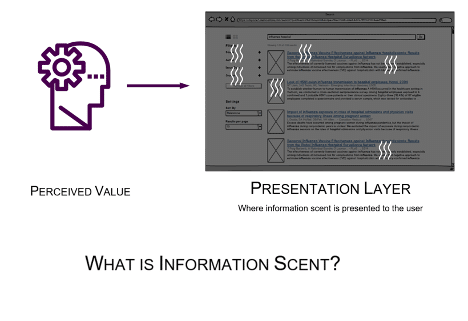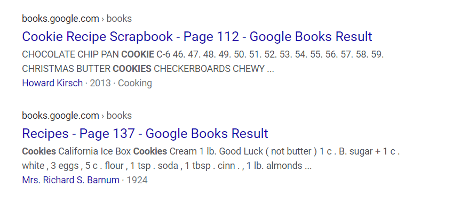Information Foraging
When developing search for a website or intranet, getting to know your end-users and their behavioral tendencies is critical in order to improve the relevancy of search results. Being able to predict how users interact with the site allows developers to design for easy navigation and intuitive search processes. An increasingly popular theme comes into play here and has to do with how users search for information on the web: it’s called Information Foraging, and it has created a new characteristic of content – Information Scent. These concepts are quickly emerging as elements of search experiences that can make or break the search process for users.
Information Foraging is a concept based on the Optimal Foraging Theory (OFT), which analyzes how animals hunt for their food in the wild. The theory suggests that animals make calculated decisions on whether or not to pursue prey based on the amount of energy they will expend in the hunt vs. how much energy they will receive from the meal. Ed H Chi, working with Peter Pirolli and Stuart Card, noticed similarities between the animal behavior analyzed in the development of the OFT and human user behavior when searching for information online. As a result, they came up with the Information Foraging theory, a theory that aims to understand how humans search for information on the web based on several factors.
One of these factors, and arguably the most important factor, is Information Scent. Much like animals follow the scent of prey in their quest for food, users follow a similar “scent” to find the knowledge and information that they need. Information Scent comes in many different forms; some are obvious, such as pictures, related content, and link descriptions. Other forms of Information Scent are more elusive; they may exist as aesthetic design, or affect a user’s subconscious without him/her knowing. The way these different types of Information Scents are depicted and arranged on a website is paramount for creating an effective and efficient enterprise search process. This blog will identify examples of Information Scent and how they can directly affect user behavior when searching for content. Familiarizing yourself with these concepts will not only help you to understand what your users are looking for, but it will also assist in the creation of a user-centric design as it pertains to searching for and finding information.
Content Titles
The title of a search result is arguably the easiest and most reliable way for users to predict what they will encounter when selecting a search result. As such, these titles need to have high Information Scent so that users are not misguided by inaccurate labeling. Typically, the title of a search result is the name of the piece of content, as shown in the image below. In this example, a user sees only a few search results after entering the query “cookie recipe.” These titles have a low Information Scent because they do not make obvious what the result is about, relying solely on a non-descriptive title to inform the user. Is this a recipe? A scrapbook? What kind of cookies are you telling me how to make? What the heck is on page 112 and page 137? These are the types of questions that result from a lack of Information Scent and, therefore, create a poor search experience.
Description
A common feature incorporated within search tools is a description of the result, usually appearing underneath the title of the search result itself. This description can incorporate hit highlighting – where instances of the search criteria appear in the result, in a general summary of the result, or in a combination of the two. This type of text adds to the potency of the scent given off by the result, as it enables users to view a brief snapshot of what content the target page will offer. The accompanying image below shows a search result containing a description with a high Information Scent, as it provides a succinct summary of what you will find in the article without having to click to find out.

Date Fields
Ask yourself this: “How many times have you clicked on an article, only to find out it was posted 5 years ago and therefore not relevant?” Although it may not be obvious, the date on which a piece of content was created or updated has a significant impact on how users will view the content. These are also common metadata tags that are exposed through search, adding the ability for users to facet their search based on Date Created, Date Modified, etc. In a world where everything is constantly changing around us, so is the content we interact with on a daily basis. As such, users will tend to navigate to the most recently posted content, as it likely contains the most up to date information. Because of this, the Created Date or Updated Date is often something that is included with a search result because it has a high Information Scent. This addition is hardly hackneyed; rather something that is expected and increasingly helpful in the search for relevant information.
Implementing High Information Scent
The question now becomes: “How do I ensure that I am providing my end users with an adequate Information Scent so that they can intuitively find the information that they’re looking for?” One thing that can be done to accomplish this is to identify which aspects of the information surfaced through your search tool have a strong Information Scent and then present those aspects in a consistent manner. This also addresses the need for effective tools to generate and maintain this metadata, so that it can be presented at the time of search. A successful search tool is almost always accompanied by an Enterprise Taxonomy, which helps to create and manage metadata, thus augmenting the search tool as a result. Other accompanying solutions help to enhance search as well, such as an Enterprise Knowledge Graph.
The concept of information scent and how it can help users to intuitively find information on a website should be the main focus of every UI/UX developer when it comes to creating their enterprise search interface. Placing the proper attributes of content in the right places can make or break the users’ experience. Assessing your company’s search solution and learning how to improve it is essential to having satisfied users, and this can be done through attending this workshop.
Does your company need help making information readily available to your users? Let us help! EK specializes in content strategy design and implementation, as well as the design and implementation of enabling technology solutions such as Knowledge Graphs, Taxonomy Management Solutions, and customized search enhancements. Email info@enterprise-knowledge.com with any questions about how we can help you.


